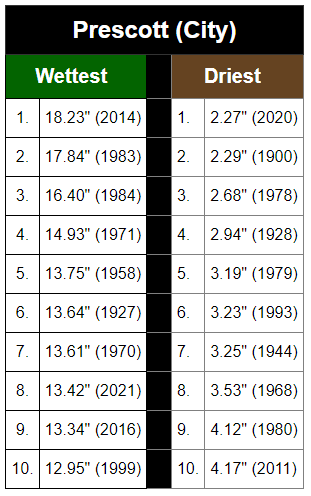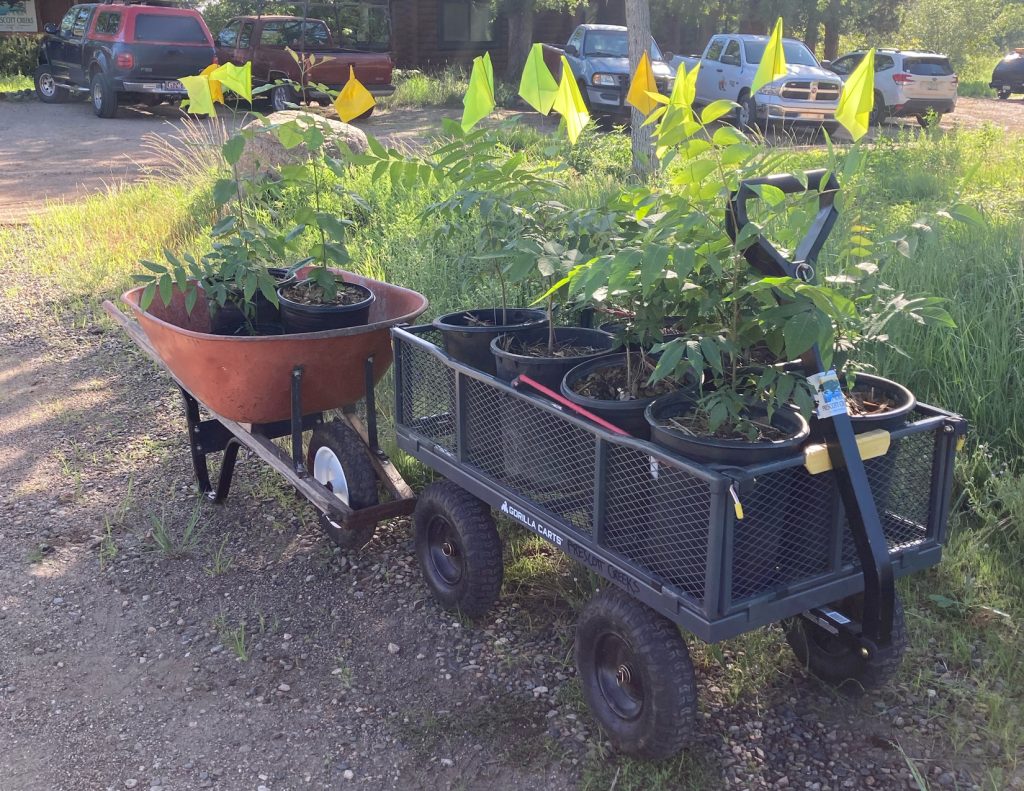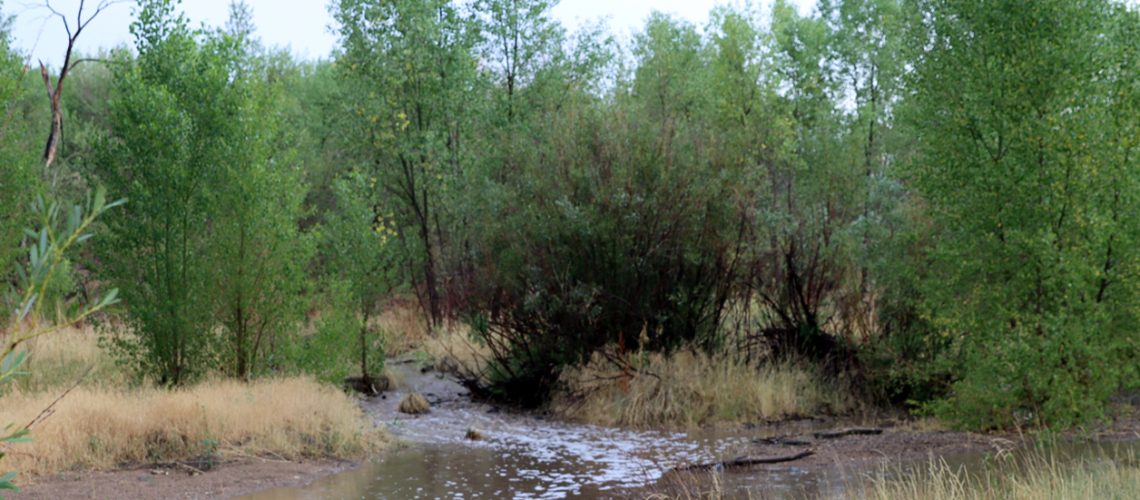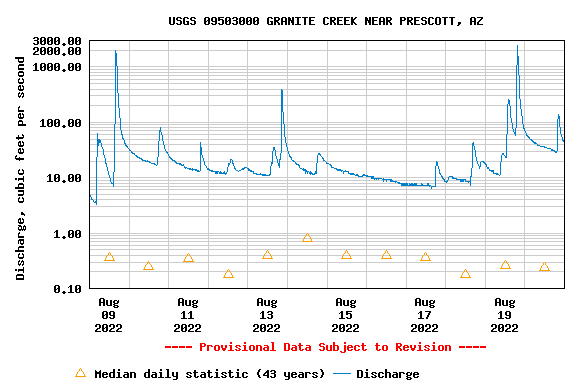The 2022 Monsoon in Prescott seems to be on track to make the top ten list for wettest monsoons according to data from the National Weather Service, National Oceanic and Atmospheric Administration (NOAA), and data collected by Prescott Creeks.
At the Prescott Creeks office, just west of Watson Woods Riparian Preserve and the Sundog Ranch Road Wastewater Treatment Plant (one of the official rain gauges for the City of Prescott), we’ve recorded a total of 12.61 inches of rain since the start of the monsoon on June 15th. The month of June had 0.97 inches, while July had 5.40 inches. To date, August has had 6.24 inches of rain.
2014 shows as the wettest monsoon on record and almost all of that precipitation arrived in the months of August and September. We still have over 30 days left in the 2022 monsoon season!

Source: National Weather Service, NOAA
This month, significant storms on August 9th and 19th generated flows in Granite Creek of 1,950 cfs and 2,540 cfs! CFS, or “Cubic Feet Per Second” is a measurement of water flow. It is the rate of water movement representing a volume of 1 cubic foot passing a given point during 1 second. (See adjacent USGS chart.)
That volume of water at the Preserve is exciting because it escapes the creek banks and spills out onto the floodplain which can act like a sponge soaking up and holding water. The water then becomes available to the over 350 plant species – like cottonwoods and willows – in the Preserve. Some of the water flows into wetlands which detain the water and filter out pollutants – like bacteria and nutrients – before they can reach Watson Lake reservoir just downstream.
As noted above, monsoon moisture is a great benefit to plants in the watershed. At Watson Woods Riparian Preserve we’ve taken advantage of this moisture by planting native trees along the South Loop Trail this summer. Arizona walnuts and velvet ash trees were planted by volunteers along the trail to increase biodiversity and add vertical structure in areas where non-native and invasive Siberian elms were recently removed. While these trees would naturally grow up in the shade of other trees, the planted trees are out in the open but “protected” with small brush piles to create shade and help soils around the trees retain moisture. It may also protect them from herbivory (being eaten by animals). Similar plantings last year (not timed to take full advantage of the monsoon moisture) showed a 64% survivorship rate. We expect a much higher percentage of plantings to survive this year since they are benefitting from what might become one of the top ten wettest monsoons!

Arizona walnut (Juglans major) and Velvet ash (Fraxinus velutina) trees prepped for transport into and planting in Watson Woods Riparian Preserve. 
You can get involved and make a difference by volunteering with Prescott Creeks. Learn about volunteer opportunities and sign up here!


